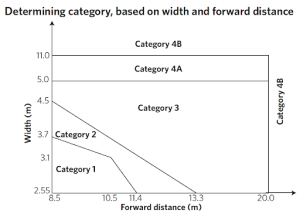The team at Ecopod understand that the world of transportable building can be a little confusing to understand from a legal and practical point of view. In reality, these options exist for simplicity and convenience for the buyer and the seller, while resulting in reliable quality with generally faster turnaround than a traditional onsite build.
This post lays out some types of transportable buildings as well as methods to help you understand what’s involved in Ecopod home transportation.
Types of Transportable Buildings
- Modular building – partially constructed, and joined together onsite, but parts of the structure is formed, thus reducing the time of onsite construction. Often, many of the trades need to be engaged again in order to finish on site for the connection with plumbing and electrical, linings, roofing and decorating. Modules can be as basic as wall sections through to completed rooms that get connected onsite.
- Prefabricated building – completely finished off-site in a manufacturing facility and transported to site for installation. The limitations on the viability of this option are access to site, such as steep slopes, narrow bridges or driveways or protected trees which may obstruct access. Once onsite, main activities for completion are generally fixing off to foundations, connections to water, electricity and internet services and installing access steps, ramps and decks.
- Tiny Houses – there are two broad categories of tiny houses, those on wheels which are considered a vehicle (and need to be less than 2.55m wide and 12.4m long, and those fixed to the land on foundations, requiring a Building Consent. Some Council districts require that an unconsented Tiny Home not be occupied for more than 2 months of the year or be relocated once every 8 months to be considered a temporary structure. Tiny Homes typically have mezzanine loft spaces for beds and lounges, although single-level Tiny Homes are also common.
- Kitsets – generally a DIY solution which is less expensive but more complex kit-sets may require an experienced builder. These may be limited to non-consented projects unless a Licensed Building is assembling it and it receives the necessary Building Inspections to receive the consent. This option isn’t offered by Ecopod at the time of writing but there are several options in New Zealand who specialise in this kind of building.
Transport Methods
Any load over 3.1 meters wide, including any roof overhangs, must display over-dimension signs and at least one pilot vehicle to be transported on NZ roads by law. Depending on the size, it may require two or three pilots, refer to the diagram below. Travel times are restricted to out of rush hour times. Special permits are required to transport anything outside the Category 1 and 2 Vehicle measurements or higher than 5 meters. Vehicle dimensions, such as a Tiny Home on Wheels have a maximum height of 4.25 meters.

- Hiab trucks – The most common mode of transport would be a truck with its own lifting arm for picking up and placing the building on foundations. The weight limit on these varies but can be up to 8 Ton for a side-by-side lift, where the lifting capacity reduces by about one Ton per meter of lift. If longer than 6m, the building would have to be transported on a trailer towed behind the hiab.
- Flat deck trucks – These are useful where a crane will be required to lift the building, or it’s travelling a long distance, as they’re less expensive to hire than a hiab, and are less limited on length for transport. Two options can be used for lifting on and off the truck, either by crane or hydraulic jacks to take the weight of the building while the truck drive under/out before lowering onto foundations.
- House moving trucks – these have specialist equipment to transport extra wide loads. This includes steel arms which extend out from the sides of the truck deck to support the underside of the building and sometimes a hydraulic suspended deck which can lift the building to overcome obstacles such as fences.
- Steel trailer – Generally only used for buildings under 3m wide, these can be used for tiny houses or single-storey pods with their own trailer. Again these can be lifted off with jacks and placed on site or just left on their trailer and levelled using stays and chocks, and the wheels taken off to reduce wearing and pressure on the axels.
- Ferries and Helicopters – aside from land transport, there’s also sea and air. Ferry constraints are generally about width of openings on the boat. For example, Waiheke barges are limited to 4.5m wide, but the Interislander ferries are up to 8m wide! Regarding helicopters, weight is an issue meaning we’ve not been able to lift a pod with a helicopter so far, but certain construction methods can bring the weight down enough to be picked up by chopper.
With our Ecopods we use a variety of means to get small homes delivered around the country from bush blocks to backyards. Get in touch today to discuss which method will best suit your site and budget and we’ll be sure to advise the most appropriate solution.
